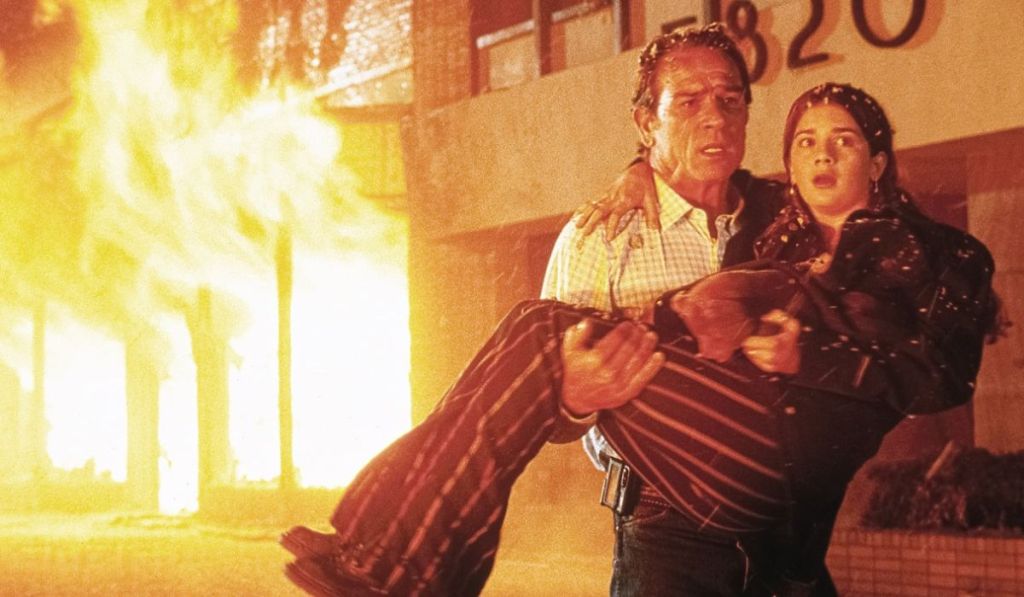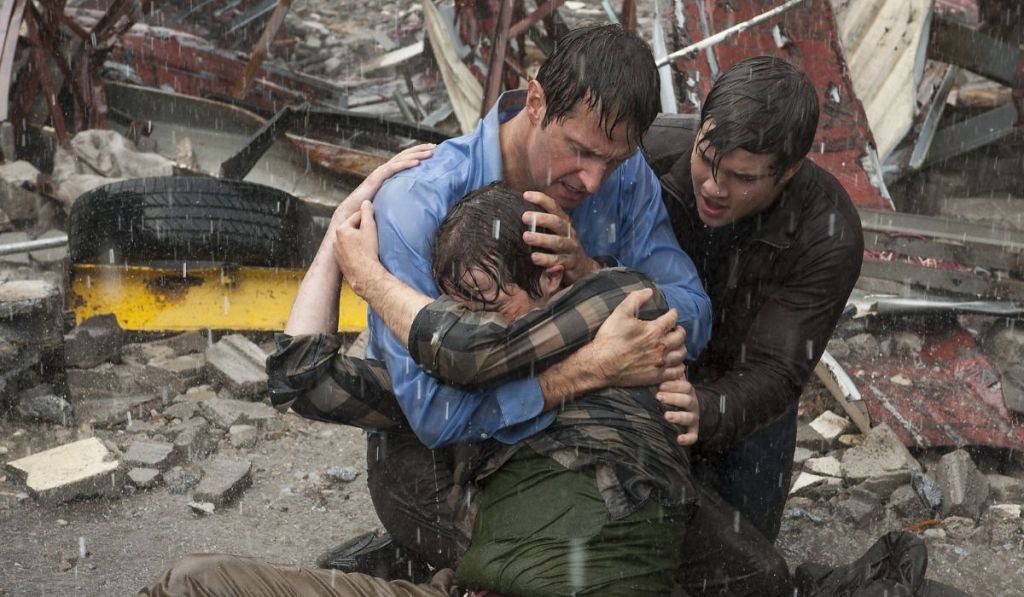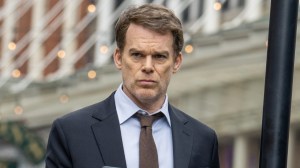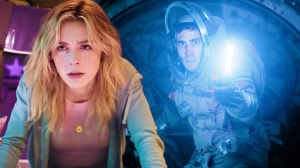Who hasn’t heard of Titanic, Twister, The Day After Tomorrow, Independence Day, 2012, or San Andreas? When it comes to disaster movies, there are plenty of famous classics with grandiose catastrophes and impressive special effects that have dominated the box office. The genre thrives on scale – whether it’s earthquakes, tsunamis, or hurricanes – and has the ability to turn chaos into spectacle. These films don’t just capture the audience’s attention, they also manage to stir the collective imagination by putting humanity to the test against nature’s uncontrollable forces. They strike a perfect balance of tension, adrenaline, and often incorporate some social or environmental commentary.
Videos by ComicBook.com
However, there are also many disaster movies that, while not achieving the same level of fame, truly deserve more recognition. If you think you’ve seen everything the genre has to offer, here are seven underrated films you may have forgotten about or haven’t had the chance to watch yet, but are definitely worth your time.
1) City on Fire

City on Fire may have been a box office flop in its day, but it’s a time capsule of both the disaster genre and the ’70s. The story follows Herman Stover (Jonathan Welsh), a former oil refinery worker who, after being fired, decides to sabotage the facility. This triggers a series of explosions, turning the city into a raging inferno. At the heart of the chaos is a newly built hospital, constructed hastily for political reasons and riddled with structural flaws. Here, doctors and nurses must save lives as everything around them collapses.
Despite its flaws, City on Fire showcases daring action scenes and practical effects that were ahead of their time. About 45,000 gallons of fuel were used to ignite entire blocks, creating stunning sequences without relying on CGI. Additionally, the plot offers a pointed critique of political corruption and urban neglect – issues that still resonate today. While critics may have zeroed in on an inconsistent script and some over-the-top performances, it’s the visual ambition that makes it memorable. For those who enjoy watching cities crumble but also want to reflect on the factors that led to such a collapse, the movie provides more depth than it may initially appear.
2) Dante’s Peak

[RELATED: 7 Underrated Monster Movies You’ve Probably Forgotten About]
The tension is constant in Dante’s Peak, but it intensifies precisely because of the emotional context the film seeks to highlight within a tragedy – a scenario that can be quite traumatic for viewers. The film is set in the small, fictional town of Dante’s Peak, which seems peaceful until seismic activity begins to alarm Harry Dalton (Pierce Brosnan), a volcanologist. Despite initial warnings, local authorities hesitate to act, prioritizing economic and political interests. When the volcano finally erupts, the residents are thrust into a desperate struggle for survival.
Today, we have advanced technology to produce films with the most realistic effects possible, but in the ’90s, this was not the case. However, Dante’s Peak stands out for its ability to blend practical effects with CGI in a way that was very competent for its time. Beyond that, the story grips the viewer from beginning to end, largely due to its focus on the relationships between the characters. While the film may not be entirely unknown to fans of disaster movies, it remains an underrated gem to the general public. It deserves more recognition for delivering a solid narrative, well-executed moments of tension, and a convincing portrayal of the real dangers that accompany such catastrophic events.
3) Everest

Everest has both technical and narrative quality, but perhaps because it didn’t follow the explosive formula of typical disaster movies, it became one of the underrated films. The story is based on the true events of the 1996 expedition to the summit of Mount Everest, when climbers faced a deadly storm during their descent. The film follows two groups led by Rob Hall (Jason Clarke) and Scott Fischer (Jake Gyllenhaal), both experienced mountain guides, who find their journeys turning into a race for survival amid extreme weather, oxygen deprivation, and life-or-death decisions.
The narrative of Everest focuses not only on the physical challenge of the climb but also on the human bonds that form in such extreme circumstances – and it’s truly distressing to watch. The film impresses with its realistic portrayal of the climb, opting for a more restrained and respectful approach to the tragedy, steering clear of sensationalism. The cinematography is both breathtaking and claustrophobic, perfectly capturing the harrowing experience. This is a movie that aims not only to entertain but also to honor those who risked and ultimately lost their lives. While this more grounded approach may have alienated viewers expecting more Hollywood-style action, it’s exactly what makes it worth watching.
4) The Impossible

Many people are familiar with The Impossible (especially since it won some awards), but among films of its genre, few seem to remember it. The movie is based on the true story of a family that survived the devastating tsunami that struck Southeast Asia in 2004. It follows Maria (Naomi Watts), Henry (Ewan McGregor), and their three children during a vacation in Thailand, when they are abruptly separated and thrown into a scene of utter chaos. The focus is on the desperate struggle of Maria and her eldest son, Lucas (Tom Holland), to survive and reunite with the rest of their family.
The entire film is absurdly impressive, from the opening tsunami scene – one of the most realistic and distressing ever made – to the intimate moments between mother and son, where everything is portrayed with a sense of urgency and empathy that elevates the experience far beyond a mere spectacle of catastrophe. The performances are deeply emotional, adding another layer of depth to the narrative. However, perhaps because it doesn’t rely on large-scale destruction or continuous special effects, The Impossible is often remembered more as a family drama, which is a total mistake.
5) Volcano

Seen as a film that failed to accurately portray reality, the truth is that Volcano goes far beyond that, and it’s precisely why it is underrated. The film is a classic disaster movie that imagines the sudden emergence of a volcano in the center of Los Angeles. The plot revolves around Mike Roark (Tommy Lee Jones), head of the city’s Emergency Management Department, who must make quick and risky decisions when a series of underground tremors lead to a volcanic eruption in the middle of the metropolis. Alongside geologist Amy Barnes (Anne Heche), he faces the impossible task of saving as many lives as possible.
Volcano is a typical spectacle of the genre, with inventive scenes and emergency solutions that keep the pace frenetic throughout. The idea of a natural disaster as unlikely as a volcano unexpectedly erupting in a city is, in itself, an attraction that combines absurdity with adrenaline. But beyond the action, the film also incorporates moments of social critique, such as the issue of institutional racism and inequality in access to aid during crises. Its underestimation completely overlooks its value as pure entertainment and as a reflection of a time when urban disaster movies were at the height of their popularity. It’s definitely worth watching with an adventurous spirit.
6) The Wave

The situation here is pure injustice, as The Wave was simply considered underrated because it was overshadowed by bigger-budget disaster movies. This Norwegian production tells the story of Kristian (Kristoffer Joner), a geologist who monitors seismic changes from a massive landslide threatening to cause a deadly tsunami in the coastal town of Geiranger, Norway. When the disaster finally strikes, the town is quickly flooded, and Kristian is forced to fight for the survival of his family and the local residents as the colossal wave approaches at high speed.
There are no flaws in The Wave. Its approach is highly realistic and plausible, largely due to how it captures the tension before the disaster and the despair as the tsunami nears. The cinematography is impressive, especially in the tsunami scenes, which were filmed using a combination of practical effects and CGI to create a visceral sense of dread and destruction. Besides, the film focuses on the emotional aspect, making the audience naturally become attached to the characters. The spectacle and vulnerability are well-balanced in a way that many other films in the genre fail to achieve. This is certainly a memorable experience that deserves far more recognition.
7) Into the Storm

The criticism didn’t soften when it came to Into the Storm, largely because it may have arrived at a time when the disaster genre was considered oversaturated by some, along with concerns that it was essentially a thriller. The film follows a group of people trying to survive a storm that not only defies the laws of meteorology but also tests the limits of human endurance in the face of nature’s destructive power. The narrative alternates between the perspectives of the survivors, including a team of storm chasers trying to document the event.
This movie is a blend of action and drama, aiming not only to showcase the damage caused but also to explore the emotional impact such tragedies have on people. The use of special effects in Into the Storm is remarkable, especially in the way destruction is depicted. However, it has been underrated, often dismissed as a mere sequence of chaotic scenes. Despite this, it deserves credit for offering a raw and immersive vision of what it would be like to survive a natural disaster of extreme magnitude. While it may lack dramatic depth, it remains effective in delivering an intense disaster experience.
These movies can be rented or streamed.








